Abstract
The reaction pathway from squalene to trans-geranylacetone in Arthrobacter sp. strain Y-11 was studied. The enzyme or enzymes catalyzing squalene degradation were found to be membrane bound. Stoichiometric analysis of a cell-free system revealed that the ratio of squalene to trans-geranylacetone changed from 1:2 to 1:1 as the reaction proceeded, indicating two steps in geranylacetone formation. The initial step was found to be oxygenase catalyzed, from the absolute requirement for molecular oxygen in geranylacetone formation and the incorporation of 18O into geranylacetone under 18O2 atmosphere. By using [3H]squalene as the substrate, we detected an intermediate in the pathway and identified it as 5,9,13-trimethyltetradeca-4,8,12-trienoic acid by mass spectrometry, infrared spectrometry, nuclear magnetic resonance spectrometry, and chemical synthesis. We deduced that squalene was first oxidatively cleaved to geranylacetone and the intermediate, and that the intermediate was further metabolized to geranylacetone. We also synthesized some of the presumptive metabolites, such as 4,8,12-trimethyltrideca-4,8,12-trien-2-one, and confirmed that they served as active precursors for geranylacetone formation. Based on these lines of evidence, we present here the pathway from squalene to trans-geranylacetone in Arthrobacter sp. strain Y-11.
Full text
PDF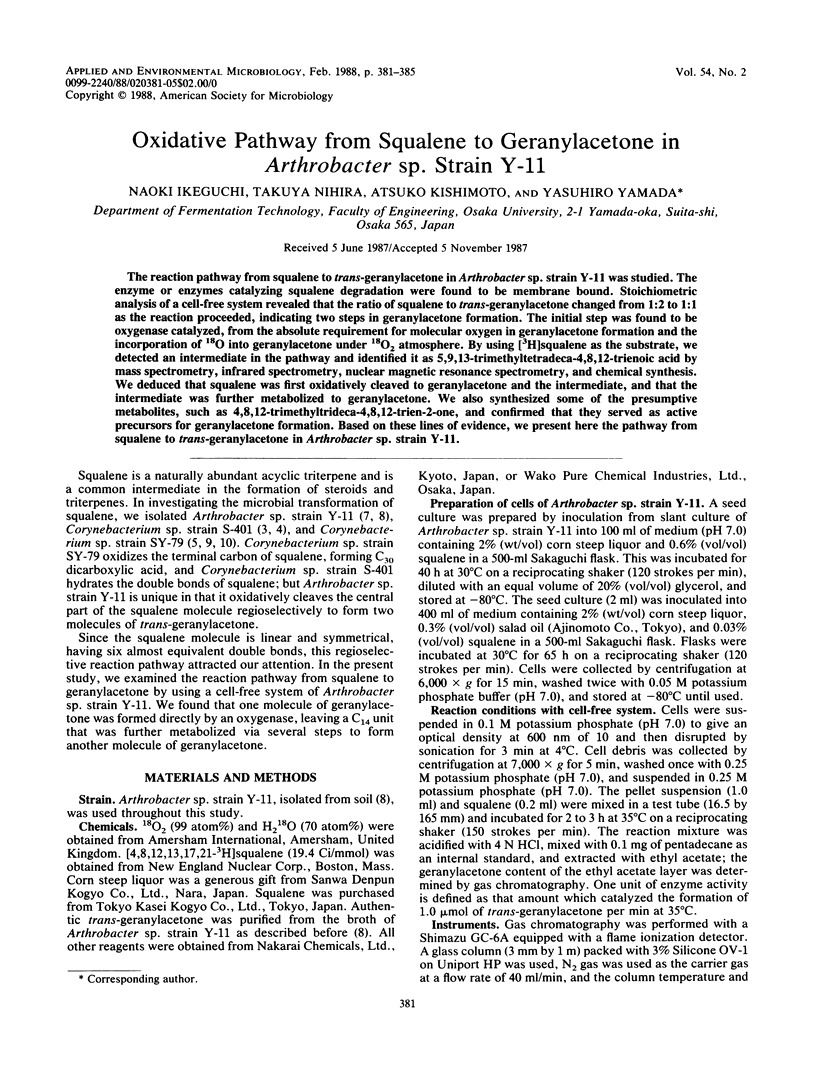
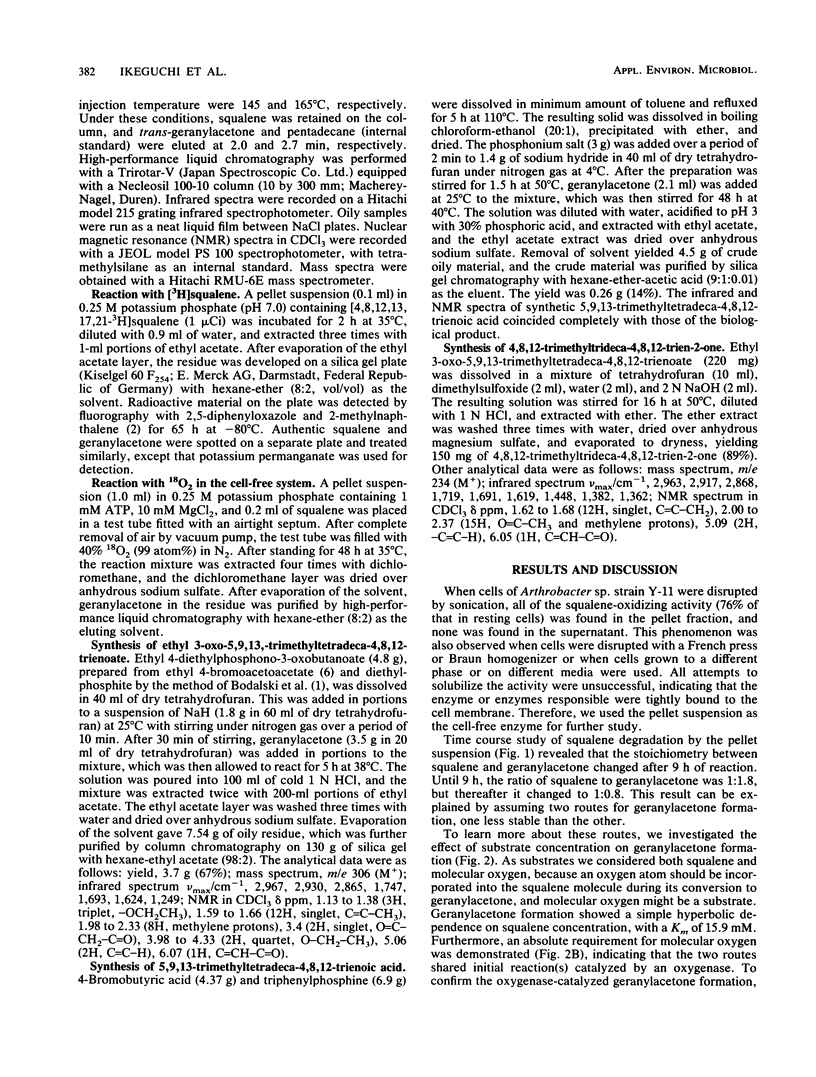
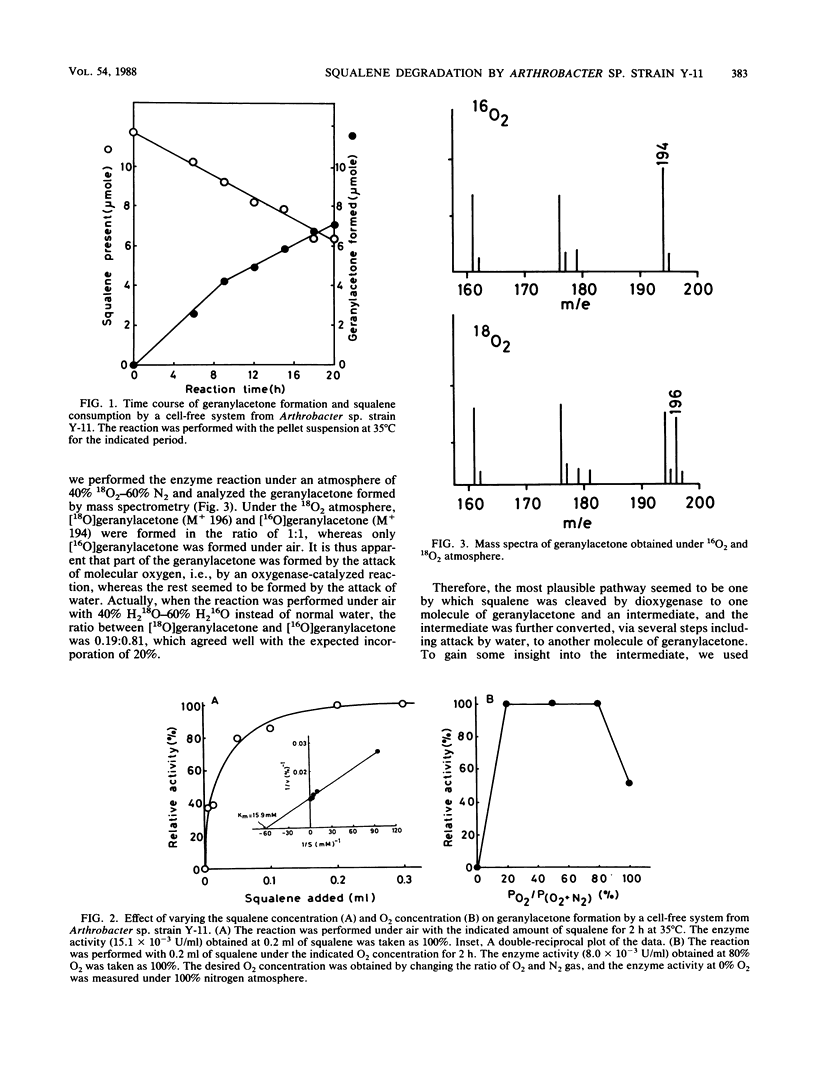
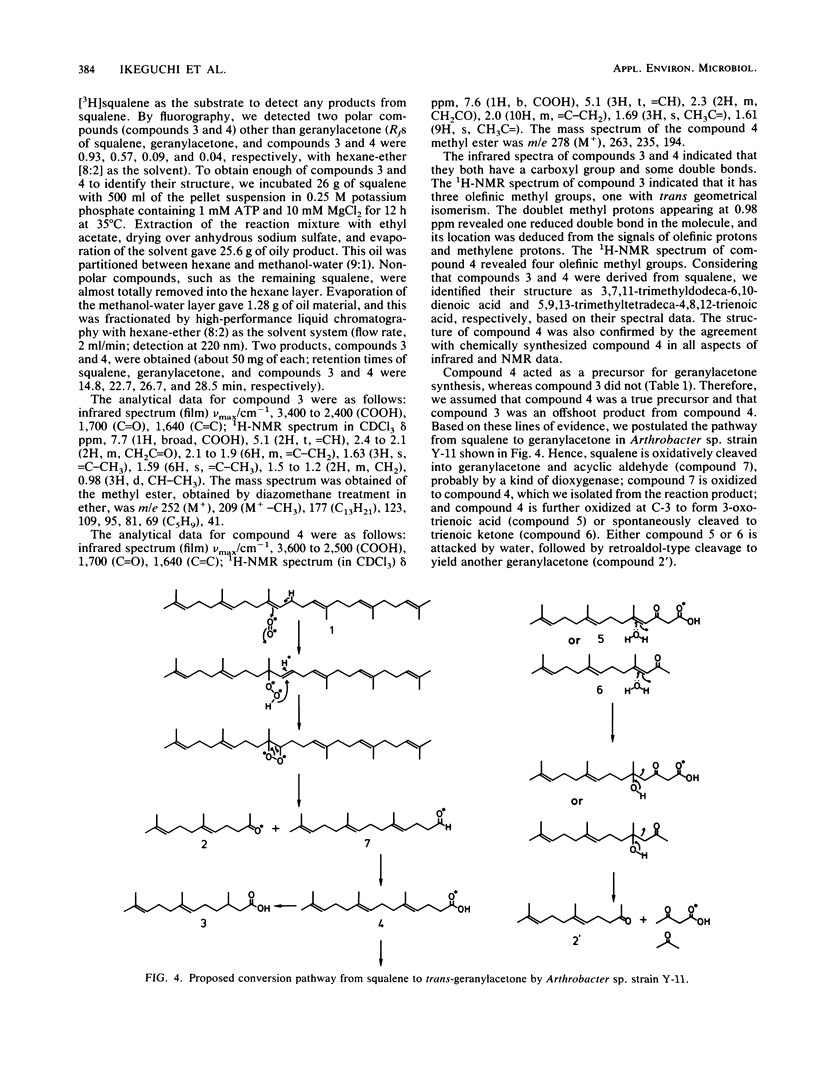
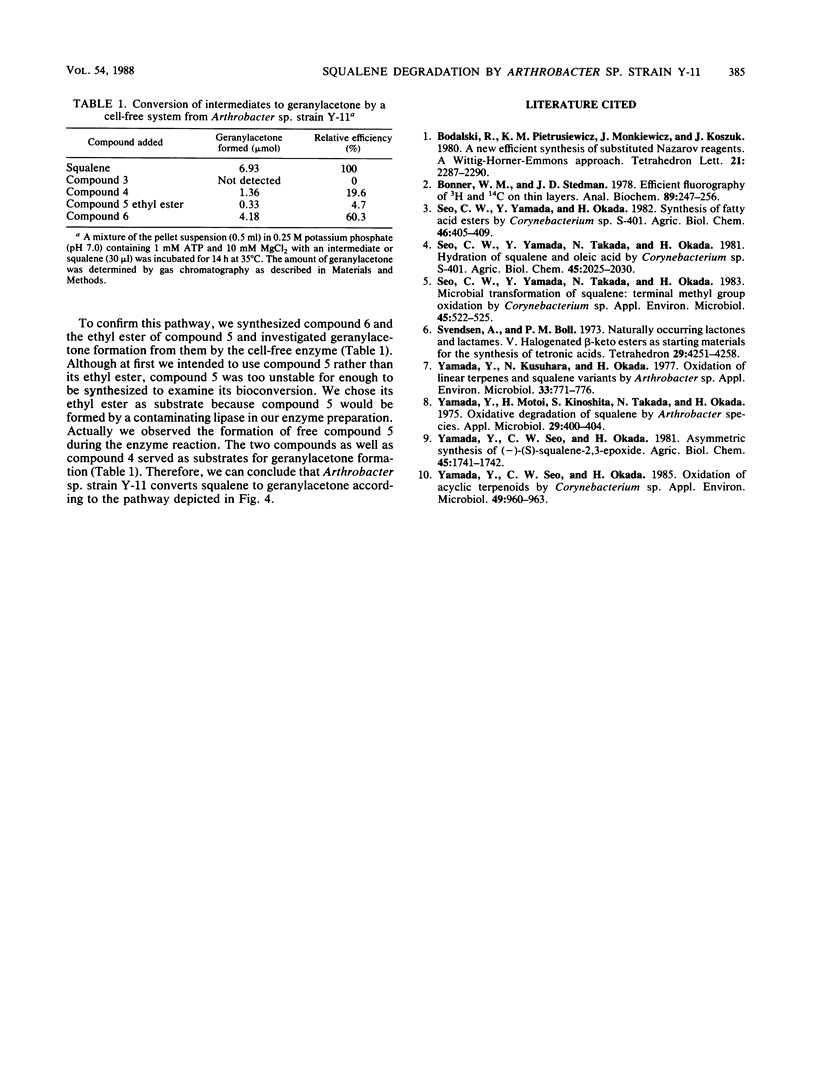
Selected References
These references are in PubMed. This may not be the complete list of references from this article.
- Bonner W. M., Stedman J. D. Efficient fluorography of 3H and 14C on thin layers. Anal Biochem. 1978 Aug 15;89(1):247–256. doi: 10.1016/0003-2697(78)90747-9. [DOI] [PubMed] [Google Scholar]
- Seo C. W., Yamada Y., Takada N., Okada H. Microbial Transformation of Squalene: Terminal Methyl Group Oxidation by Corynebacterium sp. Appl Environ Microbiol. 1983 Feb;45(2):522–525. doi: 10.1128/aem.45.2.522-525.1983. [DOI] [PMC free article] [PubMed] [Google Scholar]
- Yamada Y., Kusuhara N., Okada H. Oxidation of linear terpenes and squalene variants by Arthrobacter sp. Appl Environ Microbiol. 1977 Apr;33(4):771–776. doi: 10.1128/aem.33.4.771-776.1977. [DOI] [PMC free article] [PubMed] [Google Scholar]
- Yamada Y., Motoi H., Kinoshita S., Takada N., Okada H. Oxidative degradation of squalene by Arthrobacter species. Appl Microbiol. 1975 Mar;29(3):400–404. doi: 10.1128/am.29.3.400-404.1975. [DOI] [PMC free article] [PubMed] [Google Scholar]
- Yamada Y., Seo C. W., Okada H. Oxidation of acyclic terpenoids by Corynebacterium sp. Appl Environ Microbiol. 1985 Apr;49(4):960–963. doi: 10.1128/aem.49.4.960-963.1985. [DOI] [PMC free article] [PubMed] [Google Scholar]


